Written by Wendy R. Ellis DrPH (c), MPH; Co-Principal Investigator & Project Director, Building Community Resilience Collaborative; Sumner Redstone Global Center for Prevention & Wellness; George Washington University
Disclaimer: Moving Health Care Upstream is a collaborative effort co-led by Nemours Children’s Health System (Nemours) and the Center for Healthier Children, Families & Communities at the University of California- Los Angeles (UCLA). The views and opinions expressed in this article are those of the author(s) and do not necessarily reflect the official policy or position of Nemours, UCLA or the Moving Health Care Upstream initiative.
We are now three years into the work of building a resilience movement, community by community across the country, and I am thrilled to announce a key addition to our Building Community Resilience family, Alive and Well Communities (AWC) based in the country’s heartland. AWC is a new partner who we will learn from and also support, and they mark an important point of growth in our work and the broader resilience movement. Together, we plan to broaden their resilience work regionally, beyond the individual cities where they currently operate: St. Louis, MO, Kansas City, MO and Kansas City, KS, which we are collectively calling “BCR MO-Kan.”

Building Community Resilience is a national collaborative and network that seeks to improve the health of children, families and communities by fostering engagement between grassroots community services and public and private systems to develop a protective buffer against adverse childhood experiences (ACEs) occurring in adverse community environments (ACEs) — the ‘Pair of ACEs’. Our work to build networks that seed and support resilience can protect against the stressors that too often become toxic to a child’s development and long-term health. The BCR collaborative and network consists of five regional sites, including our newest partner, MO-Kan.

Throughout the past year, the BCR national team at the Sumner M. Redstone Global Center for Prevention and Wellness at The George Washington University has fielded a flood of requests for lessons learned, tools and resources from communities across the country. Presented with the opportunity to bring a new community into the collaborative, we sought a site that would complement the growth, ambition and innovation already taking place at BCR sites based in Cincinnati (OH), Portland (OR), Dallas (TX) and Washington (DC). After interviewing several potential sites, we selected the Alive and Well Communities (AWC) of Missouri. AWC is a merger of Alive and Well St. Louis, Alive and Well Kansas City, and Trauma Matters Kansas City, and is aimed at building a network of trauma-informed and resilient communities.
By joining the BCR collaborative and network, BCR MO-Kan aims to leverage the BCR process, tools and resources to advance three important strategies:
- Building momentum for individuals and organizations to become actively involved in making their communities and organizations across Missouri trauma-informed and resilient;
- Building capacity of the region to advance trauma-informed approaches and resiliency across multiple sectors; and
- Building capacity for evaluating trauma-informed and resilient communities using BCR’s Data Dashboard, a novel means of tracking and interpreting our sites’ program and organization-level progress.
The addition of AWC to the BCR collaborative and network is an important opportunity to test the scalability of BCR at state and regional levels. As the BCR local networks continue to expand, all of the sites are applying the BCR process and tools to support regional and state-level initiatives. In Oregon, the local BCR network is bringing on additional school district partners and child welfare agencies from across the state to organize and coordinate efforts to mitigate and prevent childhood and community adversity. In Texas, the city of Dallas is using the BCR process to organize and galvanize efforts across multiple cities for a state-level resilience and advocacy effort. In addition, BCR MO-Kan will enable our other four BCR teams to learn from their impressive work to date — and to come — including the robust network of community ambassadors who drive much of their work.
In response to the increasing demand for BCR expertise and insight — which we appreciate as thirst for this broad resilience movement! — we plan to provide more opportunities to share lessons learned. To see BCR in action, join us for the next BCR Town Hall in DC on Thursday, April 19th at 3:00pm (EST) in person or via livestream. Please join us to learn how we are applying the BCR process in the nation’s capital — and help us grow this movement to build a #ResilientNation! Importantly, anyone can access all of our resources and tools for free, including the recently released BCR Policy & Advocacy Guide. Please use and share our tools and resources — there is strength not only in resilience, but in our numbers.
Follow us @ResilNation, join the conversation on Facebook (search for “Pair of ACEs”), find our BCR tools, resources and stories at go.gwu.edu/bcr, and watch our videos on You Tube.
